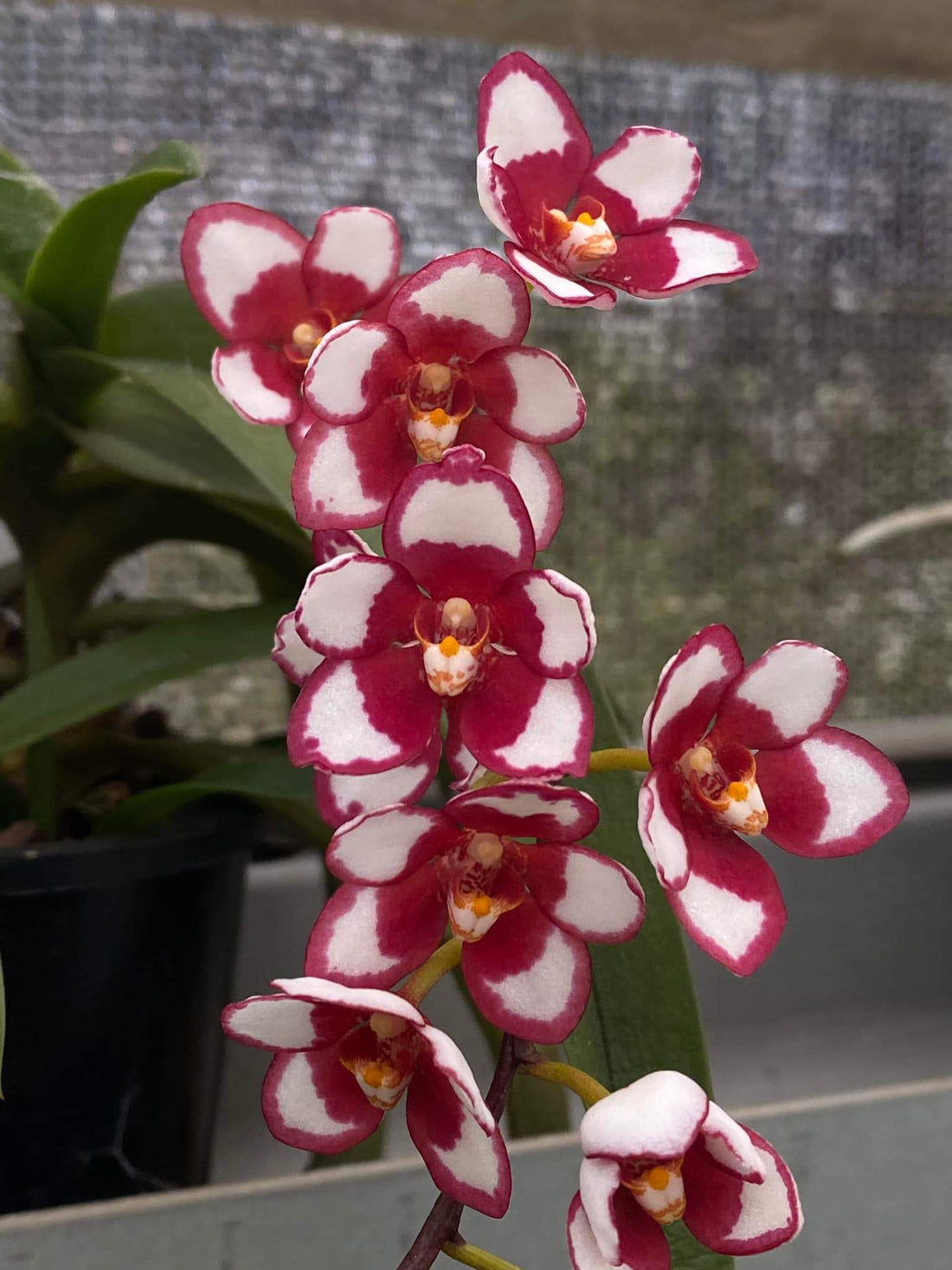
Growing Sarcochilus Orchids
Sarcochilus orchids, native to Australia, offer a rewarding experience for orchid enthusiasts with their exquisite blooms and relatively easy care requirements. In this guide, we delve into the cultural notes and essential tips to cultivate thriving Sarcochilus orchids.
1. Optimal Growing Conditions:
- Sarcochilus orchids thrive in cool environments, making them ideal for growers in various climates. During colder months, it's crucial to keep them fairly dry to prevent root rot. Using Orchiata Power potting bark provides excellent drainage, a must-have for these orchids.
- Enhance aeration and drainage by incorporating 20% super coarse Perlite into the potting mix.
- Avoid overpotting, as Sarcochilus orchids prefer snug containers that allow for proper root development.
- Fertilize regularly with a low-nitrogen, high-potash fertilizer like Orchid Osmo or similar NPK formulations. The slow-release nature of these fertilizers ensures steady nutrient supply, promoting robust flowering.
2. Sunlight and Shade Management:
- Provide ample shade during the intense summer months to prevent sunburn and dehydration.
- Maintain a moist environment by watering regularly, especially in warmer weather. Avoid allowing the orchids to dry out completely.
- In extreme heat, mist the leaves gently during the hottest part of the day to cool and hydrate the plants, reducing stress.
3. Pest and Disease Management:
- Sarcochilus orchids are susceptible to fungal leaf spotting, particularly in humid conditions. Utilize Eco fungicide or a suitable spray designed for black spot in roses to prevent and treat fungal issues.
- Eco Fungicide, known for its non-toxic properties, offers a safe and effective solution for orchid care.
- Implement regular slug baiting to deter snails and slugs, which are attracted to Sarcochilus orchids. Protecting the plants from these pests preserves their health and vitality.
4. Maintenance and Care:
- Regularly inspect plants for signs of pests, diseases, or nutrient deficiencies, addressing any issues promptly.
- Monitor moisture levels in the growing medium, ensuring it remains consistently moist but not waterlogged.
- Prune dead or diseased foliage to maintain plant vigor and aesthetics.
- Repot orchids as needed, typically every one to two years, using fresh potting mix to promote healthy growth.
Conclusion: Cultivating Sarcochilus orchids is a fulfilling endeavor that rewards growers with stunning blooms and minimal maintenance requirements. By adhering to these cultural notes and essential tips, enthusiasts can master the art of growing these Australian native orchids with confidence. Whether you're a seasoned orchid enthusiast or a novice gardener, the beauty and resilience of Sarcochilus orchids make them a delightful addition to any collection
